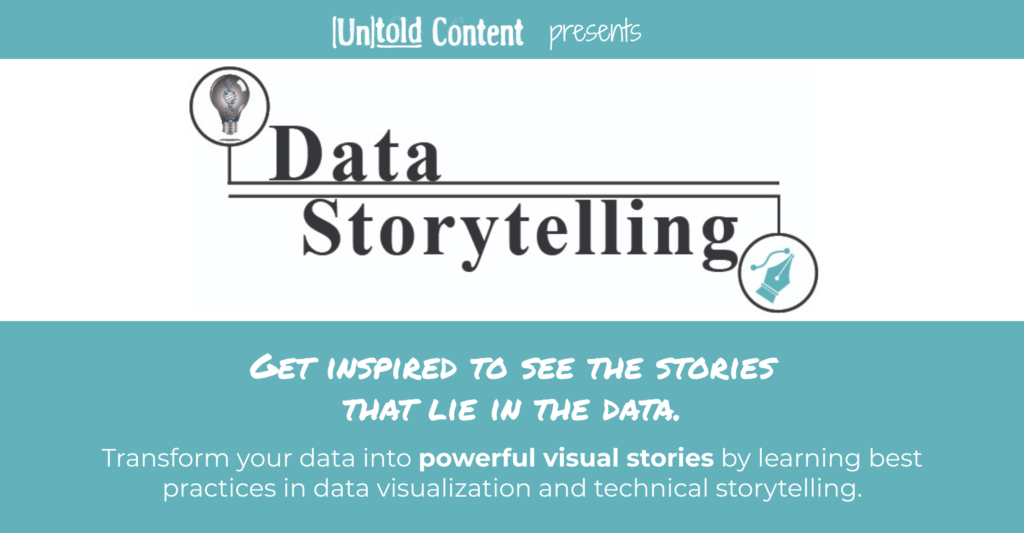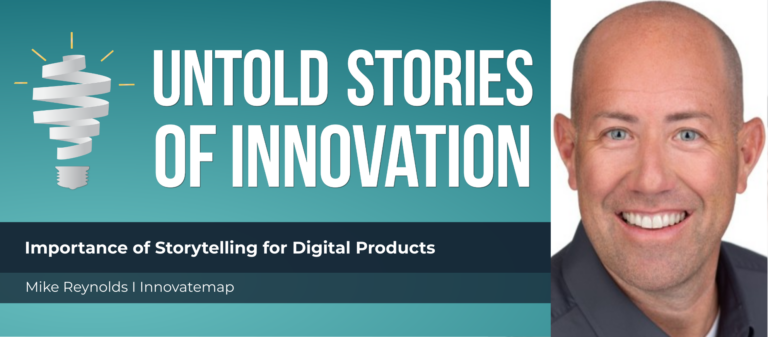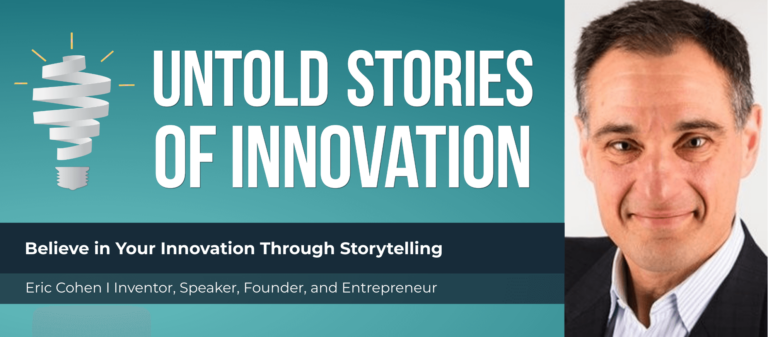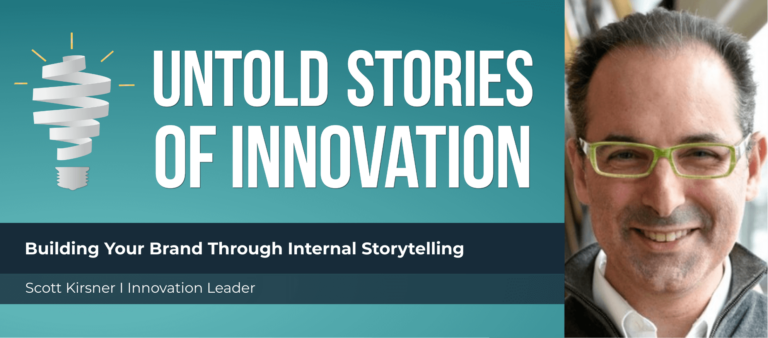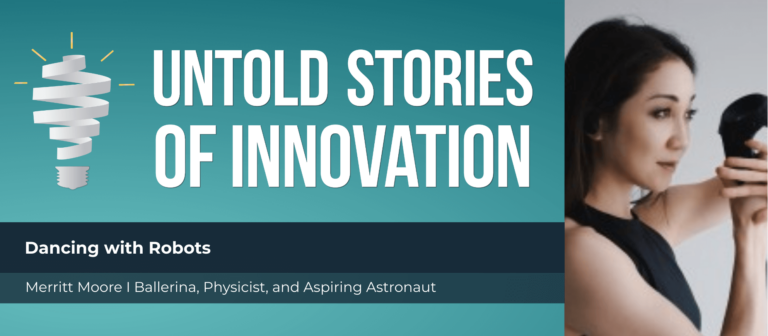Rejuvenating Innovation Visionaries with Gary Gray
Untold Stories of Innovation
“Sharing stories of the past and how great products were created helps inspire people to know and believe that they can do it too, that most of our innovations didn't come from the top down. They came from the bottom up. It's empowering. It motivates people to come to work because then everybody realizes they can make a difference.” – Gary Gray, vice president of Racing, Technology and Service for Indian Motorcycle Company, Slingshot, Polaris
From today’s episode you’ll learn:
We speak with Gary Gray, vice president of racing, technology and service at Indian Motorcycle Company, Slingshot, Polaris. The Polaris-backed revival of the American-based Indian Motorcycle Company began in 2011 and has flourished ever since with new innovations and company history intertwining to create Indian Motorcycle’s unique story. Today, Gary shares how Polaris led a rebirth of Indian Motorcycles, as well as the different narrative and strategy behind Polaris’ unique model, the Slingshot. Gary describes how “visioneering” leads them to new innovations and helps shape their storytelling.

Gary Gray is the vice president and executive leader of product research, concept, design, development, and marketing at the Indian Motorcycle Company.
untoldcontent.com/trainings/data-storytelling-training
TRANSCRIPT
This episode, Rejuvenating Innovation Visionaries is powered by data storytelling training from Untold Content and Data+Science. Transform your data into powerful visual stories by learning best practices in data visualization and technical storytelling. Whether you’re a PowerBI or a Tableau person—or just want to better communicate your data—this workshop will inspire you to see the stories that lie in the data. Learn more at https://untoldcontent.com/datastorytellingtraining/.
Katie [00:00:00] Rejuvenating Innovation Visionaries – Our guest today is Gary Gray. He is V.P. of racing, technology and service at Indian Motorcycle Company Slingshot Polaris. Gary, how are you today? I’m grateful to have you on the podcast.
Gary [00:00:12] Rejuvenating Innovation Visionaries – Yeah, I’m good, Katie. Thank you for having me on.
Katie [00:00:14] Rejuvenating Innovation Visionaries – So you’re an executive leader around product research, concepting, design, development and marketing as well. Can you share with me, off the cuff, what role do you feel that storytelling plays in those different elements or sort of activities related to innovation?
Gary [00:00:34] Rejuvenating Innovation Visionaries – Yeah, I think, Katie, I think storytelling is extremely important. I’ve worked on a lot of projects over the years. Probably released over 50 new models to the public. And, you know, honestly, one of the easier ones that I’ve ever worked on was the new Indian motorcycle. We were bringing a brand back, you know, from well, I’ll call it extinction. It went out of business in 1953. And my team was responsible for bringing the product back. And, you know, I’d previously worked on a lot of products. And I’ll tell you that one was so easy because the brand itself had such a great story and it was so easy to leverage the story of the brand and tell that story of the brand. You know, there is racing history and, you know, recent history and just this long legacy of design books written about it. Movies made about it.
Katie [00:01:30] Rejuvenating Innovation Visionaries – Sure.
Gary [00:01:30] Rejuvenating Innovation Visionaries – So it just—you know, when you’re working with engineers and you want the exhaust to look like 53, normally the, you know, the answer from an engineer would be, well no, Gary, that’s crazy. It should look like this because this is how exhausts are done today. But they just instantly get it. They’re like, yeah, it’s really important to connect the present with the past. And yeah, we’re going to work and make that happen. So that’s sort of the one of the key areas where I can think about, you know, the story of the Indian Motorcycle brand just made it so easy to work with a product development team and a great one at that to help bring a product back. It just, you know, the – all those stories helped create the bike and the image that it needed to be.
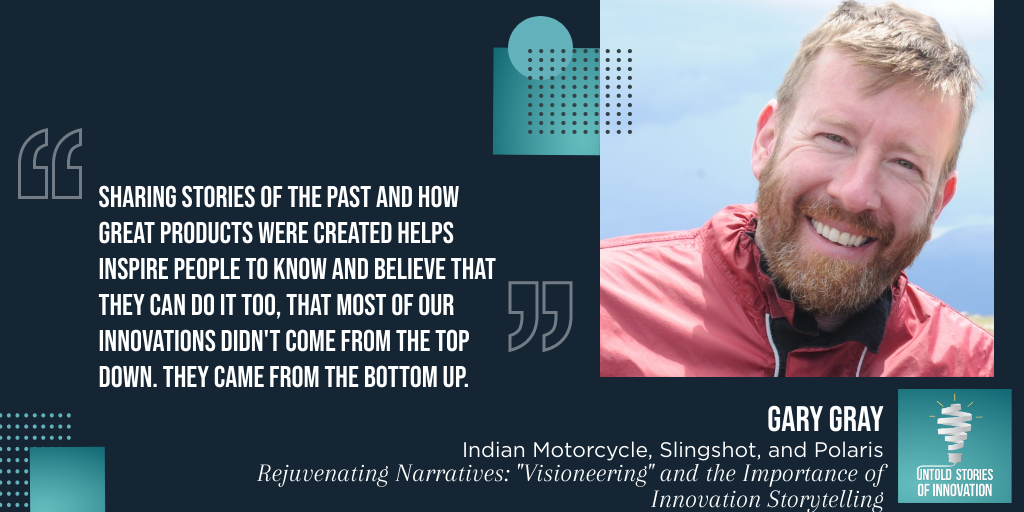
Katie [00:02:13] Rejuvenating Innovation Visionaries – So can you take us inside the technical briefs that you’re engineering and product designers that everyone’s sort of working off of in those moments? And how did you sort of incorporate the historical brand story into that moment of getting to the point of tech specs and helping everyone really believe in what they were creating?
Gary [00:02:35] Rejuvenating Innovation Visionaries – Yeah, I mean, it helps you see things and feel things and then hear things and smell things. So we actually took the key design team out on what we call the Indian History Ride. And we rode motorcycles through multiple states visiting owners with vintage collections of Indian motorcycles and got to see them in person and touch them and ride many of them. I mean, these bikes are worth you know, some of them are worth $70000. And we’re like, I can ride this? They’re like yeah, take it out. And it was so cool, you know, to ride them. You just kind of instantly zoomed backwards in time into life back then. And the people that were, you know, riding them to work or into town to get supplies or whatever it was and just really connects you with the people that designed the bike and and how they must have felt about it and the craftsmanship. It was really cool, really. You know, one of my more amazing experiences that I’ll always remember, so that – that was kind of, you know, the squishy, you know, touchy feely part of it. The more technical part of it—we have what we call a stage-gate process at Polaris. We call it the Polaris Development Process or PDP. And it walks you through how to get from, you know, who’s the customer or what’s the product’s idea, what’s the business case for this? And then it gets into tactics of how you develop specifications through either, you know, market research, focus group, competitive technical data, whatever it might be to help create a list of specifications and key product characteristics to hand off to the engineering team to do the design work.
Katie [00:04:30] Rejuvenating Innovation Visionaries – Yes. So stage-gate is an approach that a lot of enterprise innovation teams utilize. And it’s a way to, would you say sort of, get to go no go decisions and sort of break innovation down into, you know, a process, a methodology, if you will?
Gary [00:04:48] Rejuvenating Innovation Visionaries – Yeah, for sure. I mean, that’s exactly what it is, right? It gives you—that’s why they call a stage-gate. You hit multiple gates where you have to prove to leadership and, you know, your peers that you’ve met the criteria to move forward. You know, in the beginning it’s is there a customer? Is there a winning product? Is the business case sound? And later gates are, you know, have you finished validation? Have you finished homologation with all the big government entities? Are you, you know, are your suppliers ramped up and ready to go? Is the quality there? Are you ready for production? You know, those are kind of the two, the broadest, the bookends of the stage-gate. But it formalizes the process. It doesn’t mean that, you know, you’re going to come out with a winning product at the end. I look at it like a recipe and, you know, a recipe in the hands of a great chef turns into a masterpiece and a recipe in the hands of an average chef turns into, you know, something you can eat. But it doesn’t mean, you know, in this competitive marketplace that you’re gonna be the winner. But yeah, it – it gets everything in process that everybody can get in the cadence and understand what their role is and work to move the project forward.
Katie [00:06:04] Rejuvenating Innovation Visionaries – Do you think that different storytelling or sort of strategies for leveraging and getting buy in—do you think that those strategies change as you move throughout the stage-gate process so that the storytelling and the sort of framework that you might have to build at the first phase of your process may be different than the kinds of stories that are expected or the evidence that’s expected to be shared at stage 3 or stage 4 when you’re scaling.
Gary [00:06:34] Rejuvenating Innovation Visionaries – Yeah, it gets a lot more technical and a lot less fun as you go through the process. It goes from inspiring people, you know, to just reach beyond and do something truly amazing because at the end of the day, we all work for a business. And you got to deliver the results. So. And when you go to production, you know, something like a motorcycle or like a slingshot. You know, customers are gonna use this and they’re going to be on highways. And it has to be safe and it has to be validated. And so specifications and, you know, goal attainments and validation requirements and test requirements become pretty critical. So it becomes a lot more about, you know, are you – are you hitting your goals? Are you knocking down issues as fast as you should be? Have you spent the right amount of money? Not too much money. You know, is the business case still a positive return for the company? So, yeah, it certainly becomes a bit more tactical and a bit more numbers-focused than it does, you know, kind of the story and trying to inspire an organization to do something they haven’t done before at the start.
Katie [00:07:51] Rejuvenating Innovation Visionaries – Absolutely. That makes a lot of sense. And I’m curious how evidence plays a role in each phase of the stage gate and the—you know—I think that we can all agree data tells its own kind of story, or the technical challenges or technical successes also require some kind of communication and storytelling around them in order to help people know whether to move to the next stage. So could you share a little bit more insight into the role that evidence plays as you’re kind of working to move something from concept to market?
Gary [00:08:27] Rejuvenating Innovation Visionaries – Yeah, I mean, I don’t like the word evidence. It sounds like I’m in court and, you know, the jury is listening.
Katie [00:08:34] Rejuvenating Innovation Visionaries – That’s fair. What should we say instead?
Gary [00:08:36] Rejuvenating Innovation Visionaries – Information. I’ll go with information. I like that a lot better. It’s more fun. Yeah. I mean, for sure in a stage-gate, you sign up for certain things at the beginning in what we call gate 1, gate 2 is our big one where things are locked down and your spends are locked down and your test plan is locked down and requirements are locked down, your key product characteristics to locked down—what the vehicle needs to look like. And you know, those are – those are actually the fun things. And then from an operation standpoint, ramping up of suppliers, hitting key run rate, part qualification process, material releases, you know, all that’s set and timed out and. If you want to keep moving, the team has to meet its milestones and, you know, if it’s—I wanna call it a moonshot project—but if it’s a project that’s highly innovative, that has risk, whether it be market risk or technical risk, you want to make sure you’re hitting those milestones and giving the leadership team confidence that the team is on it and can handle it. Because if you are working on something that’s really new and innovative and you’re not meeting your milestones, programs are getting shut down or delayed or losing funding. So, yes, as you move through the information flow between the teams and making sure that everyone’s hitting milestones is critically important to maintain programs.
Katie [00:10:21] Rejuvenating Innovation Visionaries – So you shared with us the experience of creating the Indian Motorcycle and kind of bringing that back to life. I also happen to know that you played a pretty instrumental role in bringing the Slingshot to life, which is a super different concept in the sense that there wasn’t necessarily—really that was much more of a disruptive innovation, something brand new.
Gary [00:10:43] Rejuvenating Innovation Visionaries – Yeah.
Katie [00:10:43] Rejuvenating Innovation Visionaries – So can you share a little insight into the differences between sort of bringing something that was historically loved and known and re-envisioning it—the difference between that and creating something disruptive that really you sort of might need to do a little more convincing when it comes to the final user as to why they should be in love with that product. Can you tell us about that?
Gary [00:11:09] Rejuvenating Innovation Visionaries – Yeah, Slingshot was a very exciting and at the same time a very frightening project. I come to work and literally, you know, look at the vehicle and go, we’re gonna sell a million of these and the next day I’d walk into work and say this is gonna be a complete failure. What the hell am I doing?
Katie [00:11:28] Rejuvenating Innovation Visionaries – Can you describe the product, too, by the way, for listeners.
Gary [00:11:31] Rejuvenating Innovation Visionaries – Yeah.
Katie [00:11:32] Rejuvenating Innovation Visionaries – I think most people know what this says, but.
Gary [00:11:34] Rejuvenating Innovation Visionaries – So Slingshot is a three-wheeled vehicle, two wheels in the front, an engine behind the front wheels and then cabin right behind that that looks mostly like a car and one wheel in the back. And they’re just listening. If I drive one down the street, the most common word I hear when you stop at a gas station is that looks like the Batmobile or that looks like a Lamborghini or that looks—it’s just it’s really crazy, super futuristic. You know, it looks like it’s going a thousand miles an hour when it’s sitting still. And it’s amazing to drive and – and so much fun. So the impetus to Slingshot was we were in the motorcycle business with Victory Motorcycles. And we kept looking at the three wheeled space. So the three wheeled space kind of had two different riders in it. One was an entry level rider that wasn’t quite ready to be out on the highway on two wheels and just wanted a little more comfort and safety around them. The other customer was someone who had ridden motorcycles all their lives and was just getting a bit tentative. Being on two wheels, especially when they came to a stop holding up a bike, they wanted to move to something more stable. And the products that were out there at the time—they just weren’t that fun, going to three wheels, just the handling didn’t work out as well as it does on two wheels. Didn’t look as cool. They definitely looked, you know, like a step back, not a step forward. And so what we wanted to do is create a three wheeled experience that was – was the antithesis of both of those things that was super exciting and fun to drive. And when you looked at it, it was like, whoa, what is that? I want to drive, whatever that is. It looks so fun. So, yeah, it was a scary project. You know, it started out—one of our engineers actually created the idea in what we called a visioneering exercise. So that’s an exercise where anyone in the company can submit any idea and we choose the top five or 10 or whatever it happens to be at the time and fund those to develop a concept vehicle. So then they get to take their idea from, you know, words on a piece of paper to a living, breathing, running product, you know, that you can drive around. They don’t look super great and they don’t perform to the end expectations. But it gives – it gives the design teams in the lead company an opportunity to sit in a vehicle and drive the vehicle and – and see what the customer experience could be like. So that project went through that process and was funded with the build prototype that you could use drive and leadership got excited about it, and I would say most of the leadership got excited about it. There were still some leadership, yeah, I’m not too sure about this thing. It’s a little bit—I’m not, you know, not too certain about it because no one had really ever done something like that. And we were working on it at the height of the recession in 08-09. So when a lot of companies were retracting their investments, we were actually accelerating our investments and going into this crazy new space that no one had ever been in before. But it was a white space. You know, no one’s there. Everywhere else we were there’s tons of really, really good competition. And here there wasn’t really anybody. And as we developed the project through the stage-gate process, as we did our focus groups, you know, it was more of the same. There were a select, I’ll call it 10, 20 percent of the focus groups that just absolutely loved it. And then there’s the 80 percent of the focus groups where I can still remember one comment. How am I supposed to pick up my mother at the airport in this thing? We’re just like, yo, you’re not the customer. But at the same time, there was somebody in the room that was like, I would move in this thing, like I could pack all my stuff up in this and I could move across town. So it’s like, okay, there’s our person right there. But yeah, I mean, the focus groups were crazy because people just hadn’t seen something like this before. And, you know, even recruiting forums like who do we bring into these focus groups? Because, you know, you can’t really bring in car people and you can’t really bring in motorcycle people. And it was tough all the way through of – of identifying, you know, most of our other projects were, you know, it was pretty easy to bring in motorcyclists or it’s pretty easy to bring in somebody that’s ridden an ATV before and see what they think about a new ATV. But for this, yeah, it was a struggle all the way through from who’s the customer to how should it perform. Normally have a competitive set and you just simply do things better and the competition is doing them. And here there was no competitive side. So how great is great enough? Yeah, it’s unique. But you follow that process that you’re used to and you develop key product characteristics and you develop styling models and you show those to people. And here you have to be willing to push boundaries a bit more than you would with a normal project and move it through the process.
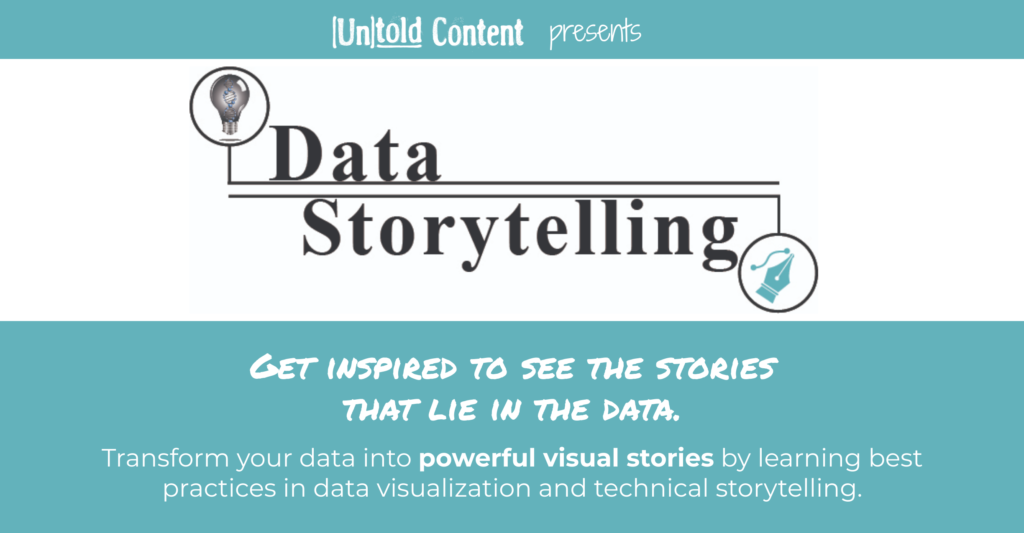
Katie [00:17:00] Rejuvenating Innovation Visionaries – At what point—I love the image of you walking in each day and seeing the prototype or seeing the early-beta project and, sort of, one day being so confident and then the next day questioning everything. I love that image because I think it’s so relatable for so many innovators. Can you share with us the moment where the doubt went away?
Gary [00:17:27] Rejuvenating Innovation Visionaries – You know, I think it’s after we built the first, we call them validation build vehicles where they have a full body, full chassis, you know, full working vehicle. It’s not validated fully for production. And your supply base isn’t ramped up or anything like that at that point. But the vehicle looks like it’s going to look and it performs like it’s going to perform. And we,you know, because it was an innovative new product, we felt like we’ve got to get consumer input early and often. And so we actually isolated a part of the city. It was actually the state fairgrounds in Minnesota, where we could block off what looks like normal city blocks, but we can block it off completely from traffic and from visibility of people seeing it then and brought actual consumers in and let them drive it and get feedback. And they were blown away and excited. You know, they all wanted to buy one immediately. And of course, it wasn’t for sale yet. But I think that’s kind of where I think we’ve got something here. I mean, you’re never fully sure until you get it into your, you know, your dealer network and you start retailing and you can see the retail numbers and and things really go. But I think we had a pretty good insight when we had those validation vehicles at the state fairgrounds and put consumers, real life consumers in them. And it wasn’t just people drinking the Kool-Aid. We were excited. It was real people that had no skin in the game out there, putting laps on them and having a great time.
Katie [00:19:02] Rejuvenating Innovation Visionaries – Thank you so much for sharing that. And if we can go backwards in the process of innovation with your teams, could you share some of the challenges that you face in getting—especially disruptive concepts even into the stage gate process? You know, so much ideation, I’m sure is happening before anything really gets activated. You mentioned some ideation, I think. Did you say it was a competition or different ways that you can, I think you called it—
Gary [00:19:33] Rejuvenating Innovation Visionaries – Visioneering.
Katie [00:19:36] Rejuvenating Innovation Visionaries – Visioneering.
Gary [00:19:36] Rejuvenating Innovation Visionaries – Disney has imagineering and we have visioneering. I mean, we’ve evolved it from that. I can’t even remember what it’s called now. We’ve evolved it a few times and expanded it. It used to be just engineering. I mean, we always said anyone could put in an idea, but honestly, it was very engineering focused. Most of the information and access resided within engineering. And that’s where most of the ideas came from. A lot of the ideas that are out in the market today came out of engineer’s personal projects either in their home or in shops at work. So it served us really well for a number of years. I mean, the Polaris 120 youth snowmobile, which was the top selling snowmobile of the year. Senior management, you know, wanted nothing to do with it. They thought it was a bad idea. So a bunch of engineers actually built, you know, a running, working prototype and showed it to people and that was what it took to change people’s minds. So, yeah, maybe this – maybe this is a good idea. Because all the market data said that, you know, the youth market was dead and the price points were really low. So your payback was long. And it took that prototype to convince senior management that this is a good idea. And as I said, it was the top selling snowmobile the year it came out. So we learned from that, you know, it’s sometimes important to fund these ideas. So our idea generation process is now truly expanded outside engineering. It’s online, it’s global. So ideas come in from our employees from all over the world. And it’s a similar type process where the ideas come in, the individual employees put as much time into it as they want. Hopefully sketches and, you know, descriptions. And, you know, if they go really far, they get to build a business case around it. And then if they get approved, they’re down selected to the top five. They get funded to build prototypes because we’ve learned that prototypes are really important for people to see and feel and touch and just really get their minds around, is this a good idea or is this something that we’re not ready for at this time? So the process is largely the same. It’s just been globalized and formalized. I would say to, you know, increase the number of ideas and still push them up sort of in the same process as it always has.
Katie [00:22:05] Rejuvenating Innovation Visionaries – If you could sort of bring a litmus test to which ideas tend to get moved in to the development process, would you say that there’s a certain recipe in terms of what needs to be sort of checked off the list, if you will, whether that’s the impact that it will have or the market share or the competition. What are sort of the – the elements of story that need to be present in order to move a concept and to the process of creating it?
Gary [00:22:37] Rejuvenating Innovation Visionaries – I would say a compelling competitive advantage. If you’re going into an existing space, if you’re going up against competitors like we do in snowmobiles or ATV’s or motorcycles or whatever it is, how are you going to win? How does – how does this offer the customer a clear competitive advantage, I think is the one key element. Of course, you know, backing that up, it has to have a sound business case, it has to meet customer expectations. But to me, the one – the one key element is where does this thing win and how? And then you have, you know—step back and say—then you have products like Slingshot that are going into white spaces. Those are – those are different. It’s it’s, you know, are you bringing a unique customer solution that no one else is, I think is the primary and then secondary but still important is, you know, the business case. Can we make money? Can we add shareholder value with this product?
Katie [00:23:38] Rejuvenating Innovation Visionaries – Definitely. Are there any other struggles that you see amongst innovators in your organization to be able to clearly communicate those particular, you know, a sort of checklist items? Are there certain challenges that you sort of see with having your engineers be able to communicate those items and get the buy-in that they need?
Gary [00:24:04] Rejuvenating Innovation Visionaries – Yeah, I mean, everybody comes with a different lens or a different focus. And, you know, engineers tend to be very technical and they think about that aspect. So they might miss the business or the storytelling of how you’re going to bring it to market. And, you know, to the opposite, a marketing person might have this great story around something they want to create. But there’s no technical way to do it. So I think every – each person brings their own unique lens of what they’re good at. And that shines usually in the idea. And where they usually fall down are the other areas of expertise. So what I’ve seen is when we can get two or three people collaborating on an idea from different departments. Like if an engineer goes to an industrial designer and they engage a marketing person and get excited about something and they bring it together as a group, those are really the impactful programs because they come with different lenses of focus and they add that cool story and they add the technical know how as to how to do it. And they’ve got a beautiful sketch from industrial design and it tells a complete story rather than, you know, one lens of the story.
Katie [00:25:18] Rejuvenating Innovation Visionaries – That vision of interdisciplinary teams coming together to make the pitch as strong as it can be—it makes so much sense, I think. And really, in order to bring something from an idea into production and into market, it’s going to require input and buy-in from all of those different internal audiences. So it makes sense to pool different, you know, stakeholders in as early as you can. Kind of bring them into the ideation process and not only reach out to them when it’s time to start to scale or operationalize.
Gary [00:25:51] Rejuvenating Innovation Visionaries – Yeah, I mean, early stakeholder involvements are always key. I think having at least one key leader in the company as your sponsors is critical. It doesn’t take a ton, but as long as you have one key leader behind a project and continually pushing that with the rest of the executive team for us, that seems to be successful. I don’t think you need everybody, but you know, the more people that you can share it with early and often, the better off you are, because at least you know, even if they’re not strong supporters, at least if they’re aware of it, I think they’re more hesitant to push back on it, whereas if it kind of comes at them from maybe a blind side. Those are things that can get you in trouble and slow down or stop development.
Katie [00:26:43] Rejuvenating Innovation Visionaries – Do you notice that being able to share stories in order to remember lessons learned or recall institutional history, that that sort of plays a role in how innovation spreads across the whole organization? I’m thinking about the story that you shared about the, you know, the snowmobile and the challenges of getting stakeholder buy-in at the beginning. But they kind of, you know, there was a lesson learned from that experience. And do you think that you find yourselves internally recalling those moments in order to help produce maybe a different kind of culture around disruptive ideas for the next concept-share?
Gary [00:27:27] Rejuvenating Innovation Visionaries – Yeah, I think sharing stories of the past and how great products were created—I think that helps inspire people to know and believe that they can do it too, that these products didn’t come from—most of our innovations didn’t come from the top down. They came from the bottom up. And if you can communicate that, you know, if you have that and it’s real and you communicate that through the organization, suddenly instead of 10 executives trying to create ideas to fight the competition, you have 13000 people waking up in the middle of the night going, man, what if we did this? Or what if we built this product? And it may not even be the product. It may be something simple on the assembly line that maybe we attach this part this way in the future versus doing it this way. And it’s faster and it’s safer and it’s more reliable. You get that army, you know, believing and pulling to make change for the better. I think that, you know, it’s inspiring. It’s empowering. It motivates people to come to work because then everybody realizes they can make a difference.
Katie [00:28:34] Rejuvenating Innovation Visionaries – I love that image. It’s so true that light bulb moment, wherever it happens, being able to harness that from any employee—and it sounds like you’re aiming to pull in ideas like that from your users, from the consumers who you serve as well.
Gary [00:28:51] Rejuvenating Innovation Visionaries – Yeah, we do a lot of focus groups. We do a lot of surveys. And yeah, I mean, the tough part is we can’t work on all the ideas. Honestly, the toughest part about innovation for me is how do you prioritize the ideas and get so many great ideas? And you only have so much budget and you know, so many people and so much time to work on it. So it’s how do you – how do you take those great ideas and quickly synthesize what they are and what they can mean in the business and choose the right ones to work on going forward? And sometimes customers can help you there. And sometimes, you know, frankly, I’ve seen a lot of evidence that customers don’t know what they want yet until you show them they don’t that they’ve never seen it before. They’re not trained to think that way. They’re trained to react to things, not not to create. So a lot of times we struggle. I mean, I’ve – I’ve honestly sat in focus groups where people didn’t want something and then you set them on a bike with that on it. And within 15 minutes, they suddenly can’t live without it. You just. I just saw you sitting there. You just told me you didn’t want that. It was actually a display screen on a motorcycle. So, you know, touchscreens are in cars and we’ve put them on motorcycles now. And before we brought it out to market, we had a bike built up and it was under a cover. And we had a focus group sitting at the table and everyone at the table said, no. You know, when I go out, ride out, I want to get away from it all. I don’t want music. I don’t want a screen in front me. I just want to be alone on the road. And we’re like, OK, well, this isn’t going to go well. We uncover the bike and they sit on it. We power it up. And this display comes up and it – it’s got a map on it that will tell them as they get low on fuel where the next gas station is. They don’t have to worry about it. You know, they can put their playlist and they can have their favorite music and, you know, navigates them home. So they have to be home by a certain time. They know they’re not gonna be late. And they’re just, you know, 15 minutes later, they love it. They can’t live without it. So, yeah, sometimes it’s difficult to get new ideas out of consumers. But, you know, usually if you can show them something, they can see and feel you can get the right answer.
Katie [00:31:00] Rejuvenating Innovation Visionaries – Seeing is believing in so many ways and I think, too, it’s really – it’s interesting. You know, there’s research to show increasingly each year consumers are leaning in to brands that they perceive as innovative.
Katie [00:31:17] Rejuvenating Innovation Visionaries – And they have an expectation that the brands that they will love and – and buy into will be innovative and continue to kind of be ready with the next best thing for them to be excited about. And there’s an interesting role then. Innovators play, innovative organizations play and really mapping the future and preparing their consumers for what life will be like in that future.
Gary [00:31:44] Rejuvenating Innovation Visionaries – Yeah, I just went to CES, the Consumer Electronics Show, in January and it’s pretty amazing. Hyundai and Uber had a quadcopter there. You know, it’s – it’s automated flying from rooftop to rooftop to ease.
Gary [00:32:03] Rejuvenating Innovation Visionaries – Inner city congestion and you know the products years and years off of it if it ever shows up. But it’s – it’s crazy, you know, how far they’re – they’re pushing out and showing people what can be to help them get ready for it in the future. There’s a balance to that. You know, there’s competitive threats, obviously, that if you show – show too early, you’re giving a – you’re giving up critical information to the company and if you show too late, you risk customer adoption. But I think with each – each type of technology, there’s a balance. And I think you’re right. You know, consumers more and more are looking for technology and their products.
Gary [00:32:42] Rejuvenating Innovation Visionaries – And we definitely see that the automotive spaces is seeing that people are buying cars not based on horsepower and torque, but you know, this – the size of the display and the dash. So things are certainly changing to more of a tech-oriented world. And we need to stay ahead of that.
Katie [00:33:02] Rejuvenating Innovation Visionaries – We did some – this is along the same lines. We did quite a bit of research at Untold Content where we looked at innovation story patterns.
Katie [00:33:10] Rejuvenating Innovation Visionaries – So we analyzed thousands of different innovation stories and we identified a very similar pattern across stories that were focused on innovations that would be disruptive, especially disruptive technologies. And we called it – we called this pattern disrupting the narrative. And essentially that kind of innovation story leans in to the hero as being the future state of things. And the climax of the story is typically what impact that will make on your life or what experience that will create. And so the narrative in that kind of innovation story is very future looking. And it places the innovation within this larger vision of what the future looks like, because if if users or even internal stakeholders can’t envision it, if they can’t relate to it, if they can’t sort of see the steps that would take us into that future, then it becomes a lot easier to say, no, not now or to say I can’t – I can’t imagine that. And so that that kind of disrupting the narrative story pattern helps break down that doubt and put yourself in that future.
Katie [00:34:18] Rejuvenating Innovation Visionaries – And I know that those technologies around flight and commuting in different ways, like moving through our environments in different ways, especially thinking of like sort of flying around on a drone in the middle of your city is a – it can really …
Katie [00:34:34] Rejuvenating Innovation Visionaries – That can be a really disruptive one. And certainly something like the Slingshot, too, like you have to be able to envision what that future would look like.
Katie [00:34:44] Rejuvenating Innovation Visionaries – So, so anyway, I – I’ve loved what we’ve talked about. It’s so interesting to think about how consumers, you know, with digital displays might not know that that’s exactly what they’ve always wanted until they’re sort of placed in that future and can envision how it would impact their experience and their life.
Gary [00:35:02] Rejuvenating Innovation Visionaries – Yeah, it’s interesting. You know, I wish we could come up with some secret code to know exactly what people wanted tomorrow. But employees, our users are out there every day and feeling now. The high points, but also the low points. There’s a lot of learning in that – that, you know, maybe you’re out in the woods on a snowmobile trip. You run into a certain pain point, you run into it over and over and there just aren’t good alternatives. And you come back to work and you find a way to solve that. I think I think you’ll always be heading in the right direction. And that’s the great thing about Polaris is almost all of our employees are users there. They’re out riding every weekend and they’re experiencing that like a real customer. And they get to come back to work and say, I want to make this better. And not only do I want to make it better for myself, but I want to make it better for all the people that buy our products and that type of innovation. That’s it’s driven by consumers because the employees are the consumers. And I think I think that. Living in your customers shoes, no matter what industry or and is, is always critically important to truly understanding the pain points of your customers and – and motivating you to work to solve those – those problems. You know, I tell – I tell our new employees all the time. It’s like as long as you’re as long as you’re working on something that’s solving a customer pain point, you’re working on a good thing. I mean, that can never be a waste of time.
Gary [00:36:30] Rejuvenating Innovation Visionaries – That can never be lost effort. If you’re working on something that’s that’s paining one of our customers, that’s – that’s a great thing to be working on. I think we’re fortunate in that we work on front fund products that our employees like to use and – and then come back to work and work to make them better.
Katie [00:36:46] Rejuvenating Innovation Visionaries – I love that it speaks to the power of empathy, being able to put yourself in your user’s shoes and it works out really nicely.
Katie [00:36:53] Rejuvenating Innovation Visionaries – If you have a company like the one they work for, where people are so passionate and sort of want to be bringing their own, you know, personal hobbies and lifestyles into their product design, and that’s that’s a really great sweet spot. And I think about other enterprises that maybe don’t have that same you know, there’s not maybe quite as there’s not as much closeness between the innovator and the users and the end user.
Katie [00:37:23] And so thinking about how powerful that is to get outside of your own body, to talk with others, to empathize, to see what life is like in all facets of your end users or the people who are trying to support trying to kind of live in their shoes and and make sure that whatever you’re doing, like you said, is solving an urgent problem for them.
Gary [00:37:46] Can’t say that enough. You know, get out of the office. Go hang out with your customer. Not for five minutes, not for a half hour, but for days. You know, hang out with them, you know, at least a full eight hour day, if not multiple. And – and see if you’re designing desk chairs, see how they sit in their dusters, see how they – they work during the day. If you’re designing a full office space, you know, spend time in those spaces. If you’re working on a locomotive, you coach it out on the rail tracks and ride around with an engineer on a train and see how that’s used everyday. You’ll take away things that you just never thought of or understood sitting in near your cubicle.
Katie [00:38:25] I love that. That’s great advice. One final question. Have you seen Phantom Lake on Amazon Prime?
Gary [00:38:32] I have not seen Phantom Lake on Amazon Prime.
Katie [00:38:35] It’s a new series. Well, speaking of user experience and closeness to the innovations, I have never been on a motorcycle. I will say that from the start. I know I’m really interested, now, after our conversation. But – but I’ve been watching the series called Phantom Lake that just is like trending on Amazon Prime right now. And it is terrifying me because it’s all about, you know, inexperienced riders trying to go out to a really challenging trail for the first time. And it’s cool. I mean, it’s not I shouldn’t say it’s terrifying me. It’s inspiring because – but it helped me realize just how hard it is to ride a motorcycle. I did not realize it was something that required so much skill.
Gary [00:39:22] Yeah, it’s a – I don’t know if – if you start early enough, it comes naturally. It’s like riding a bicycle, they say. But yeah, I’m going to have to check out Phantom like on Amazon. Interesting.
Katie [00:39:35] Yeah. I’ll give you a sense of the novice community, I think, or at least people who are motivated to learn.
Gary [00:39:41] Well, it’s good. I mean. Yeah, I mean that’s you know, that’s another perspective that I think about is that only about 3 percent of North Americans actually ride a motorcycle. So there’s 97 percent population out there that – that are afraid of it or don’t want to or for whatever reason don’t. And that’s how do you. That’s one thing that personally I struggle with. Like I’ve ridden my whole life. So I don’t get that side of it. But if you can – if you can learn and understand, that’s about the consumer growth that you can get. If you can break down those – those barriers and that’s, you know, part of what Slingshot was, too. All right. Maybe two wheels isn’t your thing, but maybe three wheels is maybe.
Gary [00:40:20] Maybe, Katie, start out on a Slingshot and we’ll work your way into an Indian Scout.
Katie [00:40:26] That’s right. That’s awesome. I love this conversation. I’m so grateful that you made the time, Gary, to talk with us today. And thanks for being on the podcast.
Gary [00:40:36] Great, Katie, thank you so much for having me. Have a great day and weekend.
Katie [00:40:39] Thanks. You, too.
Gary [00:40:40] All right. Bye.
Katie [00:40:41] Bye.
You can listen to more episodes of Untold Stories of Innovation Podcast.
*Interviews are not endorsements of individuals or businesses.
